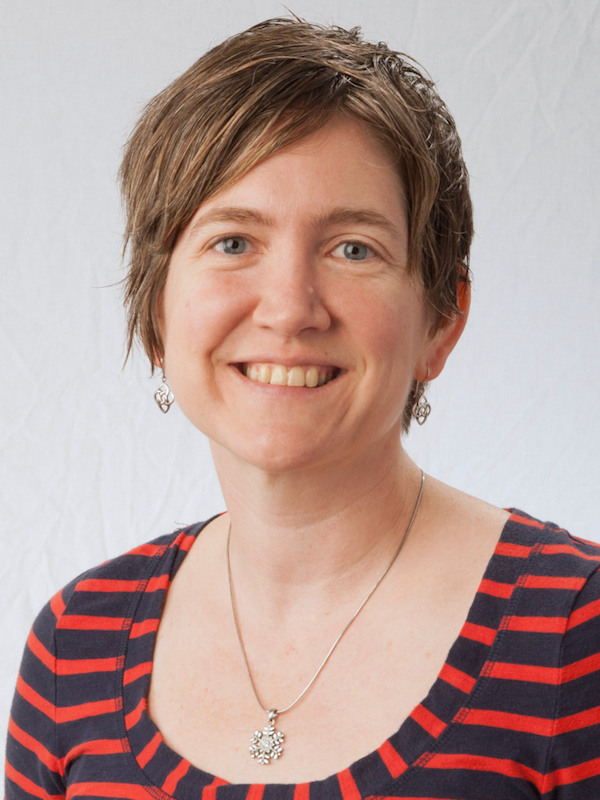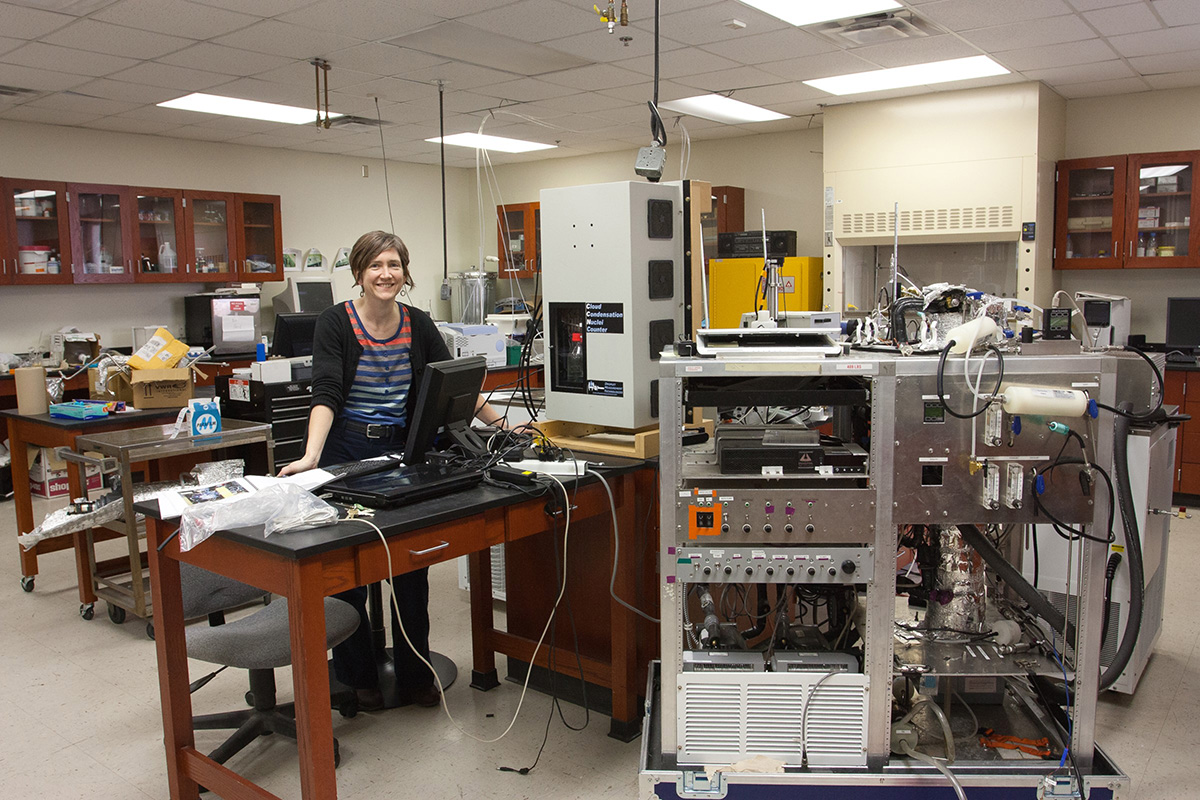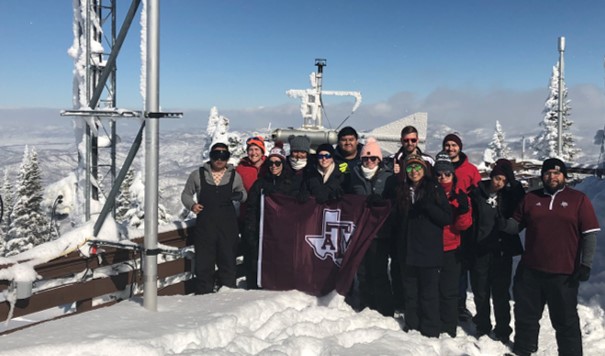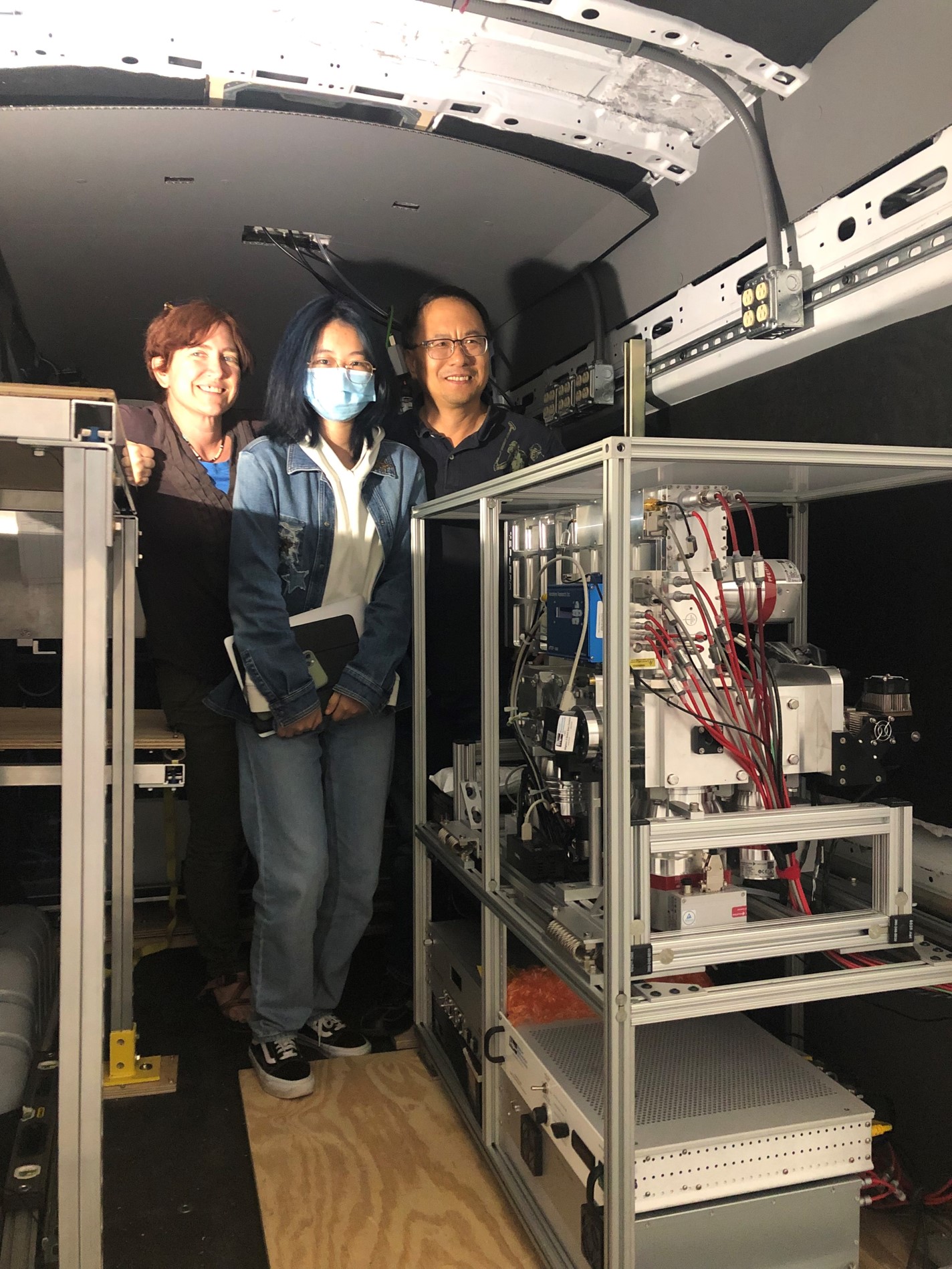
Texas A&M professor enjoys making good measurements and advising up-and-coming scientists
Even before she arrives at work at Texas A&M University (TAMU), chances are Sarah Brooks has already spent time exchanging ideas about the atmosphere with her favorite student.
On the drive to school, her 7-year-old son enjoys discussing clouds with his chauffeur/mom, who happens to be an expert in the subject. Beginning with cloud identification, Brooks’ son has impressed her with his ability to pick out the ones he thinks will produce rain.
The teacher has apparently impressed the student as well. Brooks’ son has bestowed upon her the title of “Doctor of Clouds.” To the rest of us, she is a research scientist, professor, and director of the Center for Atmospheric Chemistry and the Environment at TAMU.
In January 2023, Brooks began a four-year term on the Atmospheric Radiation Measurement (ARM) user facility’s User Executive Committee (UEC). This elected group represents the user community of ARM, a U.S. Department of Energy (DOE) Office of Science user facility, while engaging with ARM management.
Brooks is also part of a research project team for DOE’s ASR program.
Chemistry, a Love Story

Brooks’ path to research began in northeastern Pennsylvania, where she first fell for science as a child fascinated by the changing leaves. Later, an excellent high school chemistry teacher laid the groundwork for her future. In Mrs. Layou’s class, Brooks gained a strong grasp of the subject, and her curiosity was sparked. She credits Mrs. Layou as the catalyst for her academic path—and her chosen field of research.
Brooks’ next stop was the Massachusetts Institute of Technology. There, she discovered a love for chemistry from a fundamental perspective. After earning a Bachelor of Science degree in chemistry, she joined a research team at DuPont, the chemical giant.
She was at DuPont for two years working with catalysts to find faster processes to make stronger spandex, a stretch fabric. However, she was concerned that her work was producing toxic plastics, and that motivated her to make a change.

“I got out of that and focused on being an environmental chemist, which is essentially what I am now,” says Brooks.
A Move to Colorado and Climate Science
The environmental and atmospheric chemistry program at the University of Colorado Boulder (CU Boulder) suited that focus and allowed her to do something environmental with her chemistry degree. “I knew I wanted to join the army of people working on the climate problem,” she recalls.
Armed with a doctorate in analytical chemistry, Brooks accepted a postdoctoral position at Colorado State University (CSU), where she developed an instrument called a continuous flow diffusion chamber (CFDC).
CSU had its own CFDC to count ice-nucleating particles (INPs), tiny atmospheric particles that initiate ice formation in clouds, but Brooks wanted it to do more. She wanted absolute certainty that the instrument was counting ice and not droplets. No commercial instrument capable of this existed, so she modified CSU’s original plan to build her own.
Her instrument—now known as the TAMU CFDC—has the same chamber as CSU’s version, but she added a depolarization detector, which differentiates between droplets and ice. Her CFDC also provides information on the shape of the ice crystals.
In 2005, Brooks accepted a position at TAMU as a research scientist and professor. Maggie Tolbert, whom she calls “one of the best mentors in our field,” set a stellar example as her advisor at CU Boulder. Along with her research goals, Brooks wanted to be a good advisor to someone else and decided being a professor was the best way to do that.
The days when she is doing research and teaching are some of her favorites. Brooks has conceived of a “smorgasbord” of projects to support her work with INPs, and she enjoys matching her students with projects where she thinks they will “do their best work and learn the most.”
An observer at heart, she reports, “It’s a fascinating challenge to get the match right.” Brooks shepherds conscientious, detail-oriented graduate students to laboratory projects while steering gritty, resourceful students toward the field.
Every year, excluding those with a pandemic, Brooks takes undergrads to Storm Peak Laboratory, a mountaintop research facility in Steamboat Springs, Colorado. The students have their own capstone projects, and sometimes those become part of the research science.
ARM Campaigns

In 2008, Brooks embarked on her first campaign as a professor: ARM’s Indirect and Semi-Direct Aerosol Campaign (ISDAC) on the North Slope of Alaska. She took her TAMU CFDC and investigated ice nucleation. The researchers “commuted” by plane from Fairbanks to Barrow (now known as Utqiaġvik).
She brought the CFDC to the Fifth International Workshop on Ice Nucleation phase 2 (FIN-2) in Karlsruhe, Germany, for a laboratory intercomparison of ice-nucleation measurements in March 2015. Later that year, she and the CFDC participated in a field intercomparison at Storm Peak Laboratory as a part of FIN-3.
Brooks went on to lead an INP campaign related to ARM’s 2021–2022 TRacking Aerosol Convection interactions ExpeRiment (TRACER) in the Houston, Texas, area. Downtown Houston is about 90 miles southeast of the TAMU campus in College Station, where she works.
Brooks and her team assembled the Rapid Onsite Atmospheric Measurements Van (ROAM-V), which carried a suite of instruments to collect aerosol samples for the TRACER-INP campaign. The campaign focused on quantifying aerosol concentrations around Houston and their ability to act as INPs.
ASR, which supported TRACER campaign activities, also funded work associated with TRACER-INP.
Brooks and her team retrofitted the ROAM-V to operate on 1,000 pounds of dry-cell batteries. This allowed them to take the van anywhere, and it produced no exhaust that could alter their sampling data.
During TRACER’s summertime intensive operational period in 2022, the ROAM-V sampled air masses at the coast near Galveston in the morning. The team then drove the van to Waller, an inland site about a 75-minute drive northwest of La Porte, where ARM operated one of its mobile observatories, to collect measurements in the afternoon and evening. This way, the team captured data before and after the air masses passed the ARM observatory.

TRACER-INP data are available in the ARM Data Center.
Why ARM’s UEC?
As a supplier and user of ARM data, Brooks sought a spot on the UEC because she wanted to ensure a quality connection between the people working hard to generate the data and those using them.
“The database is priceless, but it’s also only as good as the data and your understanding of it,” says Brooks. “If you put inaccurate or confusing data into the database, it perpetuates the inaccuracies and the confusion.”
It has been only a couple of months since the arrival of the most recent request for data she submitted to ARM from the 2008 ISDAC campaign. The fact that people still request these 15-year-old data makes her appreciate the importance of the ARM Data Center.
After TRACER, Brooks was about to submit data sets for five instruments when the opportunity to run for the UEC came up. She became one of eight new members elected to the UEC by ARM users. She is representing aerial measurements on the larger committee while serving on the Measurement Uncertainty and Communicating Calibrations Subgroup.
Brooks has enjoyed working on field projects from the sea, air, and ground. Still, she says the chemist in her enjoys being in the lab figuring out fundamental details.
“I love seeing measurements made well,” she says. “I love it when all the instruments fire up and you have confidence that they’re actually operating and that you’re sampling something that’s never been sampled before.”
This attitude is a valuable one to find in a “Doctor of Clouds.”
Read UEC profiles of current and past members.
# # #This work was supported by the U.S. Department of Energy’s Office of Science, through the Biological and Environmental Research program as part of the Atmospheric System Research program.

